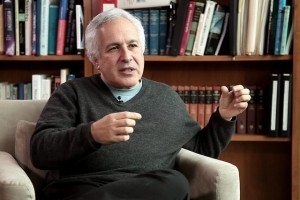Autism
Developmental psychologist Uta Frith on psychopathy, the biomarkers of autism, and the autism spectrum
How to confuse the cancer navigation system? What biological mechanism guides cancer cells to different parts of the body? What is the connection between cancer and HIV? These and other questions are answered by Director of Sidney Kimmel Cancer Center, Richard Pestell.
It is the spread of cancer that ultimately kills people, rather than usually the primary disease. And it is unusual, in fact, for the primary disease to cause the death of our patients. Now, if we use the example of diabetes, diabetes mellitus, this is a disease within the pancreas, initially in secreting cells, and this leads to a production of high levels of glucose in the blood. With apropriate treatment the insuline levels can be restored in humans, and people can live with the disease of diabetes, ultimately dying from some of the complications.
In the case of cancer it is these complications of cancer that kill patients and, in particular, the spread of the disease. So our thinking has been to change completely the paradigm of cancer and think not so much about the car and blowing up the car, killing the primary cancer, but rather understanding how it is that the cancer spreads, and having to find the mechanisms of the spread to design new types of treatment that will block the spread of cancer. Ultimately, we now know that cancer has a GPS, a global positioning system, which sends the cancer to the distant sites.
The experiments were really quite dramatic. In the animals that were treated with drugs that block the CCR5 – the same drugs that have been used to block the HIV virus entry via the CCR5 – these compounds dramatically reduced the spread of prostate cancer cells to the brain and to the bones. Now, untimately, it’s very frequent that the spread of the disease kills patients. In the case of the mice the treatment with these inhibitors dramatically reduced the spread of the cancer to the brains and to the bones.

Developmental psychologist Uta Frith on psychopathy, the biomarkers of autism, and the autism spectrum

Neurobiologist Jeff Lichtman on brain cell connections, Golgi stain, and big data in neurophysiology

An evolutionary “throwback” seems to have occurred in birds, which resurrected an ancient, amphibian-like patt...